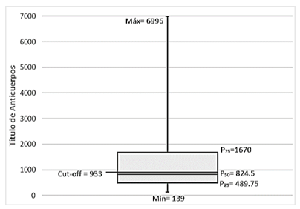Prevalence of antibodies against Newcastle disease virus in backyard birds in the Ahuac Sector 1 populated center - Junín, Peru
DOI:
https://doi.org/10.51252/revza.v3i1.469Keywords:
breeding, ELISA, chickens, backyard, virusAbstract
The Newcastle is one of the pathogens that presents a social and economic importance at the level of the poultry industry since it presents a high morbidity and mortality in birds, being important at the level of the poultry industry. The objective of this study was to determine the presence of antibodies against Newcastle disease in backyard chickens in the Ahuac Sector 1 population center of the Ahuac district, Chupaca province, Peru. Blood samples were taken from 40 hens during May to July 2021 from backyard farms. The samples were processed in the Avian Pathology Laboratory of the SENASA Animal Health Diagnostic Center Unit, using the Indirect ELISA test. It was determined that 45% of the birds were positive for the presence of antibodies against Newcastle disease (40% of the young hens and 46.7% of the adult hens).
Downloads
References
Alexander, D. J. (2001). Newcastle disease. British Poultry Science, 42(1), 5–22. https://doi.org/10.1080/713655022
Cuello, S., Vega, A., & Noda, J. (2011). Actualización sobre la enfermedad de Newcastle. Revista Electronica de Veterinaria, 12(6), 1–30. http://www.redalyc.org/html/636/63622160010/
Deka, P., Nath, M. K., Das, S., Das, B. C., Phukan, A., Lahkar, D., Bora, B., Shokeen, K., Kumar, A., & Deka, P. (2022). A study of risk factors associated with Newcastle disease and molecular characterization of genotype XIII Newcastle disease virus in backyard and commercial poultry in Assam, India. Research in Veterinary Science, 150, 122–130. https://doi.org/10.1016/j.rvsc.2022.04.018
Ferrer M., R., Icochea D., E., Salas S., A., & Alba Ch., M. (2012). Prevalencia de anticuerpos contra el virus de la enfermedad de Newcastle en Gallus Gallus de Lima; estudio de caso-control. Revista de Investigaciones Veterinarias Del Perú, 19(1), 67–74. https://doi.org/10.15381/rivep.v19i1.1264
Guevara Oquendo, Ví. H., Salgado Jijón, G. E., & Salazar Medina, E. F. (2013). Determinación de anticuerpos séricos contra Newcastle en aves de pelea de veinte criaderos ubicados en la Ciudad de Riobamba [Universidad Central del Ecuador]. http://www.dspace.uce.edu.ec/handle/25000/3128
Lucas Aguilar, C. (2019). Monitoreo serológico de la enfermedad de Newcastle en gallinas comerciales en el Departamento de Cochabamba [Universidad Mayor de San Simón]. http://hdl.handle.net/123456789/13436
Osorio Reyes, I. A. (2015). Evaluación de diferentes dosis de una vacuna recombinante comercial contra la enfermedad de Newcastle aplicadas en pollos comerciales y desafiados con una cepa virulenta del virus de Newcastle [Universidad Nacional Autónoma de México]. https://repositorio.unam.mx/contenidos/3502258
Romero, M., Narváez, W., & Sánchez, J. (2009). Enfermedad de newcastle en aves de traspatio del eje cafetero Colombiano. Revista MVZ Cordoba, 14(2), 1705–1711. https://doi.org/10.21897/rmvz.354
Ticona Avalos, P. D. (2018). Descripción de casos positivos a la enfermedad de Newcastle en aves domésticas de Perú reportados al Servicio Nacional de Sanidad Agraria y a un laboratorio privado los años 2015 al 2017 [Universidad Peruana Cayetano Heredia]. https://hdl.handle.net/20.500.12866/3709

Published
How to Cite
Issue
Section
License
Copyright (c) 2023 Luis Alfonso Ríos-Porras, Juan Carlos Solano-Ayala

This work is licensed under a Creative Commons Attribution 4.0 International License.
The authors retain their rights:
a. The authors retain their trademark and patent rights, as well as any process or procedure described in the article.
b. The authors retain the right to share, copy, distribute, execute and publicly communicate the article published in the Revista de Veterinaria y Zootecnia Amazónica (REVZA) (for example, place it in an institutional repository or publish it in a book), with an acknowledgment of its initial publication in the REVZA.
c. Authors retain the right to make a subsequent publication of their work, to use the article or any part of it (for example: a compilation of their works, notes for conferences, thesis, or for a book), provided that they indicate the source of publication (authors of the work, journal, volume, number and date).






